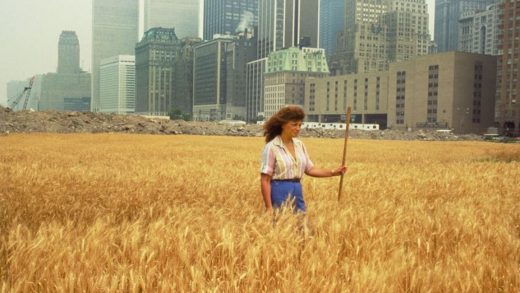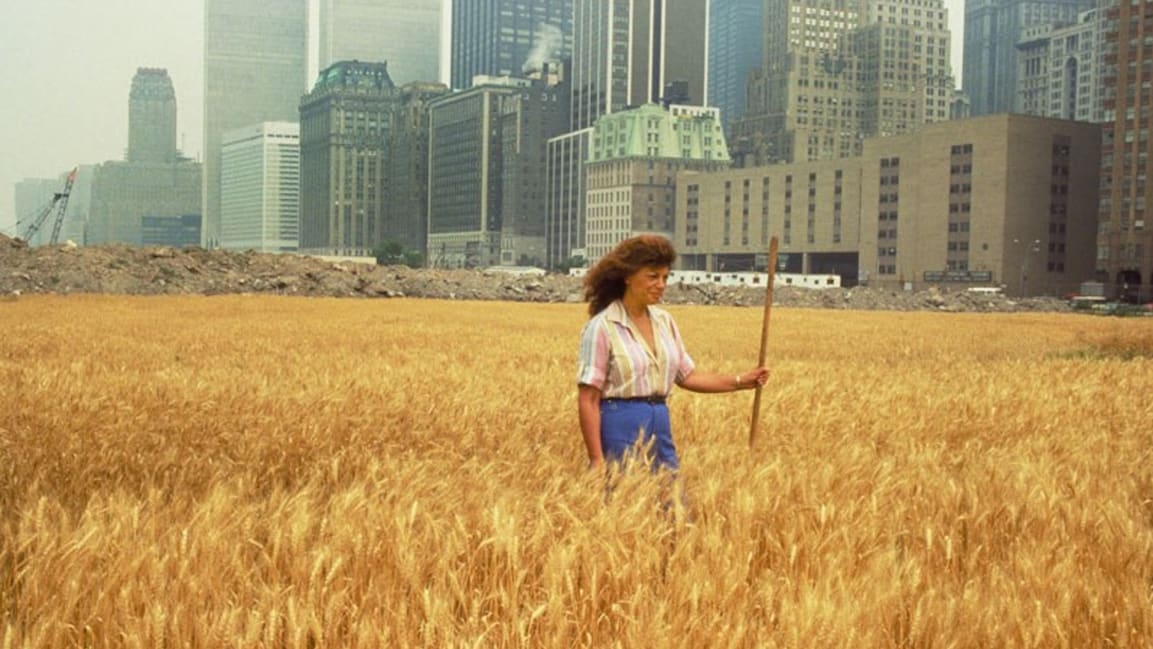We can save our planet and stop behaving like ‘robots,’ says environmental artist Agnes Denes
The idea seems unreal, like some fever dream of New Yorkers who long for the pre-9/11 days, when life was simpler and there was room for hope and beauty and spontaneity. But it really did happen: Back in 1982, a two-acre wheat field improbably sprouted at the base of the World Trade Center, amber waves of grain swaying in the breeze just a few feet away from skyscrapers and the mayhem of the city.
It was the brainchild of artist Agnes Denes, who planned the monumental environmental project to urge humanity to change its ways and reassess its values. She roped off a space atop the landfill excavated from the Twin Towers site, arranged to have dump trucks deliver tons of rich topsoil, and organized people to dig furrows and plant seeds. Within a few months, a beautiful wheat field became a fairy-tale-like destination that captivated jaded New Yorkers commuting to their office jobs. At one point, Denes even brought in threshers to harvest the crop.
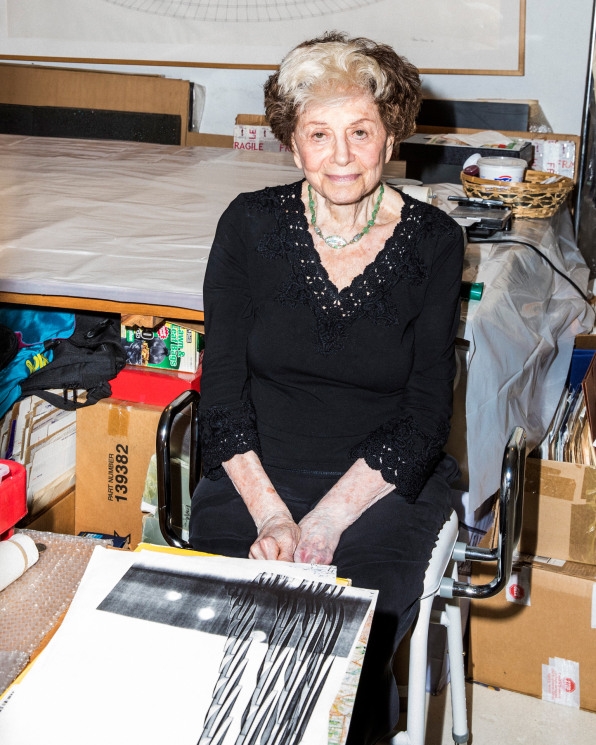
[Photo: Jeremy Liebman. Courtesy The Shed]
That project is the highlight of Agnes Denes: Absolutes and Intermediates, the long-overdue Denes retrospective at the Shed, the new exhibition space at Hudson Yards in Manhattan. And Wheatfield—A Confrontation, which is depicted in photos and videos, is still stunning. I’ve lived in New York City for almost 30 years, work just a block away from Ground Zero, used to dine and drink with friends at a bar atop the old World Trade Center, was covered in dust and debris when the towers fell, and yet I’d never heard of this project.
In addition to Wheatfield, the enormous new exhibition (which is open and runs through March 22, 2020) features the 88-year-old artist’s other environmental works from around the world and her essays and drawings that focus on scientific and philosophical topics, some of which were uncannily prescient. Denes recently answered some of our questions via email.
Fast Company: What inspired you to plant a wheat field at the base of the World Trade Center?
Agnes Denes: When invited by the Public Art Fund to create a sculpture for a plaza, I decided to plant a wheat field instead of another man sitting on a horse. It created the paradox the work is based on if you read my writing on the work. It called attention to the misuse of land, world hunger, and misplaced priorities.
FC: At the time, you wrote that you hoped the work would get people to reconsider their priorities and said, “Unless human values were reassessed, the quality of life, even life itself, was in danger.” Your words are haunting, in light of the 9/11 tragedy. Have we completely failed to reconsider our priorities?
AD: Completely or partially, it doesn’t matter. We move slowly, even if danger is clear and apparent. We usually correct in hindsight.
FC: What could we do better individually and through government action?
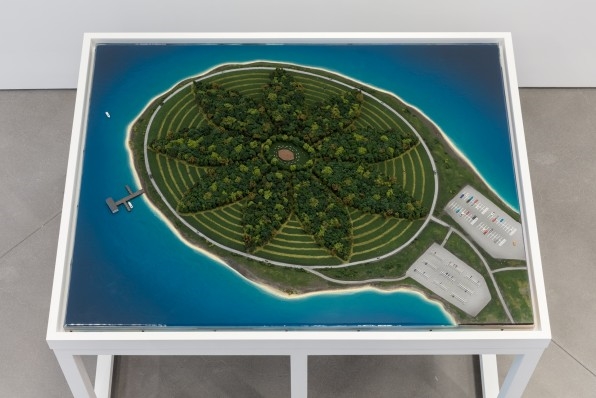
[Photo: Stan Narten/courtesy of the artist and Leslie Tonkonow Artworks + Projects]
AD: This isn’t something that can be answered quickly. [Denes then referred to her writings on environmental issues, which express the need to make drastic changes to avoid a climate catastrophe. She doesn’t hold out much hope for government action but has taken on the challenge as an artist. In the wake of Hurricane Sandy, she created the idea for a manmade forest in Far Rockaway, in Queens, to hold back rising sea levels. It remains unrealized, but a model for this concept is featured at the Shed. For her work Tree Mountain, she got 11,000 people to plant 11,000 trees in Finland, creating the world’s first manmade forest built by humans.]
FC: Even more prescient than your essay on Wheatfield were your words in Matrix of Knowledge [a collection of Denes’s essays and drawings published in 1970] about the overload of information to come in future decades. “When having to read and learn that much becomes more than the mind can handle, reduction, preselection, and elimination will be the answer,” you wrote. That prediction certainly came true, considering our addiction to social media and our current era of Big Data. What can we do to pull back from drowning in information (and misinformation)—or is it too late?
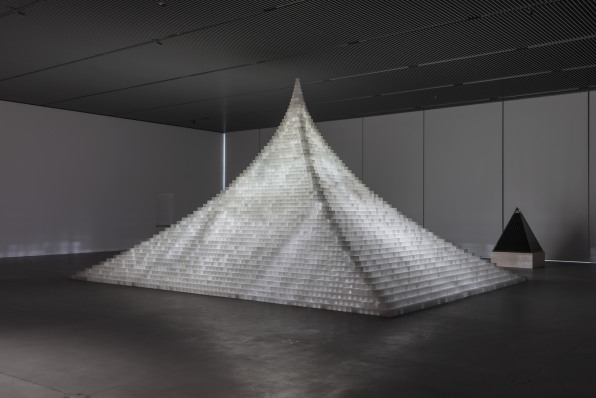
[Photo: Stan Narten/courtesy of the artist and Leslie Tonkonow Artworks + Projects]
AD: It’s not too late, but maybe a huge catastrophe is needed to stop the addiction and take people’s minds in a different direction. Monkey see, monkey do. People imitate each other. Tell people that only stupidity and lack of education will make them susceptible to this form of communication, and if the message is believable, they may stop. In old times people who committed a crime were tied to a post in a public square to be shamed in front of their relatives and friends. Today we have something similar on a large scale. Don’t just shame people, educate them effectively.
FC: Do you believe art can influence our thinking, to help us rethink our priorities and values? Or is that becoming more difficult to do in an era where we’re overloaded with information and media (video games, streaming entertainment, virtual reality, etc.)?
AD: Art could, just not the kind that’s out there. People get quickly on bandwagons. Environmental art spreads like wildfire and now everybody wants to partake in its production. It’s okay, but do some good, make people think and act effectively. Art can educate as well as be pleasing. Every work I made also offered solutions to the problem that it dealt with, exposed, called attention to, solved. We are becoming robots. I would like to make people think and feel good about themselves. Inside, even in a misguided fool, lurks a good person. My art touches on that secret spot.
(31)

